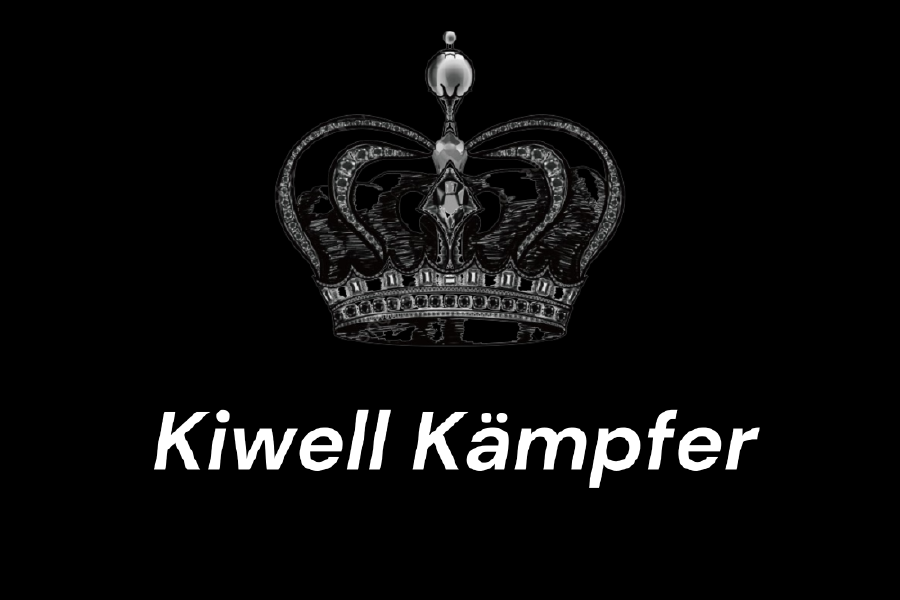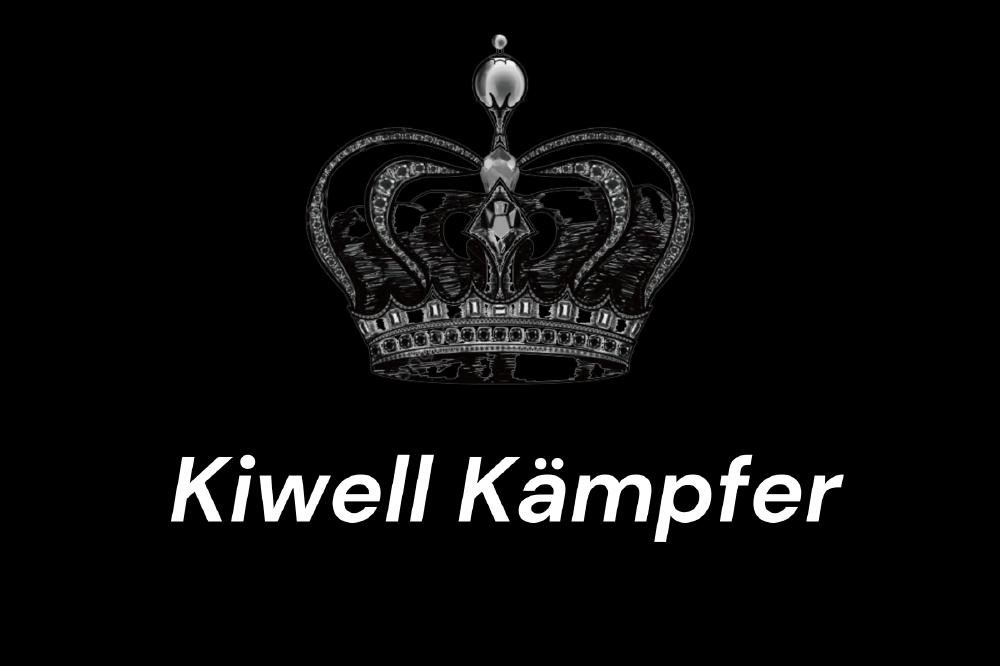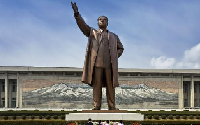G.O.M LORE
The Migration Era: 1455-1501
The Migration Era was a time of great wanderlust and upheaval for the Pruenic people and their allies, the Wuhzek and Khazan tribes. These three distinct groups roamed the continent of Malliorca, their combined strength formidable against external threats. The Pruenic people, known for their leadership and majority, guided the three tribes. However, underlying tensions simmered due to differences in race and intentions. The Wuhzek sought to voice their concerns, but their pleas were often overshadowed by Pruenic dominance, leaving the Khazans in a similar position of voicelessness. These festering grievances ultimately sparked the Tribal Wars.
The Tribal Wars: 1501-1555
The Tribal Wars erupted in 1501, ignited by the Pruenics, with the Wuhzeks and Khazans fighting for their land rights and autonomy in Malliorca. Rich in resources, the continent became a battleground where each tribe fought on its own terms. The Pruenics, led by the charismatic Hammod Kiwell, faced the Wuhzeks under the strategic leadership of Yuzek Mazon and the Khazans guided by the fierce Puji Boron. Each leader pursued their tribe's objectives, leading to intense and prolonged conflicts. In 1555, after years of bloodshed, the three leaders met to negotiate peace, resulting in the formation of the "Three Kingdoms of Malliorca," dividing the land among them.
Three Kingdoms of Malliorca: 1555-1712
The establishment of the Three Kingdoms marked a new era. The Pruenics founded the Kangmis Kingdom, the Wuhzeks established the Kingdom of Yumen, and the Khazans formed the Kingdom of Reliodia. Despite the formal division, ambitions to control all of Malliorca persisted. Over the years, border skirmishes and internal strife were common. The rise of Visionism, a religion that claimed to supersede all others, threatened the stability of Kangmis. The kingdom's suppression of this new faith led to the assimilation and reintegration of many followers, alongside a brutal inquisition.
The Humed War: 1682-1688
The Humed War between the Kangmis Kingdom and Yumen was among the fiercest conflicts in the region. Fueled by territorial disputes and economic competition, the war resulted in significant casualties and severe economic repercussions for both kingdoms. The war ended in 1688 with a decisive victory for Kangmis. Yumen was forced to pay heavy reparations, cede territory, and saw its military capabilities severely diminished, leading to internal crises.
The Munek War: 1694-1712
Following the Humed War, tensions remained high. In 1694, the Munek War erupted, involving all three kingdoms. This conflict was marked by relentless battles across all fronts. The superior knights and bowmen of Kangmis clashed with Yumen's mighty cavalry and Reliodia's formidable defenses. The war devastated Malliorca, with cities razed and forests set ablaze. Civilian casualties soared as families waited in vain for their loved ones to return from battle. By the war's end, over 700,000 soldiers and civilians were dead or captured.
Unification under the Kangmis Kingdom: 1712
In the final stages of the Munek War, the Kangmis Kingdom's superior tactics and relentless assaults overwhelmed both Yumen and Reliodia. The leaders of Yumen and Reliodia, recognizing their untenable positions, surrendered to the Kangmis. In 1712, Malliorca was unified under the Kangmis Kingdom, ushering in an era of peace and stability. This unification ended centuries of conflict, laying the foundation for a prosperous and cohesive Malliorca under a single rule.
Kangmis Kingdom: 1712-1799
"The Prosperous Unification," as local historians call it, marked a period of relative peace and progress following the unification of Malliorca under the Kangmis Kingdom. Despite this, the deep-seated differences between the races—Pruenic, Wuhzek, and Khazan—created significant tensions. The northeast, predominantly inhabited by the Wuhzek people, became a hotspot for unrest, as local stationed knights struggled to maintain order. Simultaneously, in the south, the Khazans protested vehemently, demanding "Rights of Humans" and the "Right to Live."
To quell the chaos, King Gida Kiwell XV established the "Kangmis Constabulary and Gendarmerie" (KCG), a force aimed at reintegration and the suppression of local disturbances. However, this move was controversial. The Pruenic populace viewed it as a mere "power move" to enforce order, while the Wuhzek and Khazan saw it as an instrument of oppression. This period, known as the "Racist Age," saw racial profiling and violence escalate dramatically.
King Gida Kiwell XV, infamously dubbed "Gida the Racist," was accused of exacerbating racial tensions, not just among the Wuhzek and Khazan, but also within the Pruenic population. This rampant racism and oppression ultimately sparked a movement towards unity and nationalism among the three races.
The Holstrot Peace: 1799
Amidst the turmoil, three remarkable individuals emerged: Uzak Imon, a Pruenic; Yunak Powell, a Khazan; and Tyov Witchell, a Wuhzek. These men began to engage in peaceful and civil discussions, contrasting sharply with the prevailing violence. Their conversations took place in the city of Holstrot, which became a symbol of hope and reconciliation. As word of their gatherings spread, people from all three races flocked to witness the unprecedented unity.
The sight of these three men laughing and talking together had a profound effect on the populace. In the capital's central square, armed citizens began to lay down their weapons, inspired by the harmony they witnessed. This spontaneous demonstration of peace and mutual respect marked the beginning of the "Holstrot Peace."
The Holstrot Peace, named after the city where it was born, significantly strengthened the unity among the Pruenic, Wuhzek, and Khazan people. The movement, led by Uzak Imon, Yunak Powell, and Tyov Witchell—henceforth known as "The Three Fathers"—promised to never again fight among themselves or oppress their fellow citizens. They reminded the people of their shared history of cooperation and camaraderie, long before the formation of the Kangmis Kingdom.
With newfound solidarity, the Wuhzek in the northeast ceased their mayhem, and the Khazans in the south halted their protests. This unity culminated in the "Holstrot Peace Protest" of 1799, where The Three Fathers led a massive, peaceful march to the capital's central square. Their objective was clear: to overthrow the racist King Gida Kiwell XV and dismantle the oppressive KCG.
Holstrot Peace Protest Massacre: 1799-1800
The Holstrot Peace Protest, initially a beacon of hope for unity and reconciliation, turned into one of the bloodiest massacres in the history of Malliorca. As Uzak Imon, Yunak Powell, and Tyov Witchell—The Three Fathers—led thousands in a peaceful demonstration in Holstrot, the pressure on King Gida Kiwell XV intensified. Fearing for his throne and interpreting the protest as a dire threat to the stability of the Kangmis Kingdom, the king made a fateful decision.
King Gida Kiwell XV, overwhelmed by the scale of the protests, saw the demonstrators as a destabilizing force. In a speech filled with fear and desperation, he commanded his forces to act with brutal decisiveness:
"These civilians are causing us to strand and also cause us instability that will weigh tons of unrest. If this is not yet resolved, then we will resolve it by force! KCG and Golden Knights will resolve this not by peace and diplomacy but by force!" - Holstrot Memorium
With this, 500 members of the Kangmis Constabulary and Gendarmerie (KCG) and 50 elite Golden Knights marched out from the "Hammod Estate" to confront the protesters. As the peaceful chants of "PEACE FOR ALL, PEACE FOR US AND EVERYONE! PUT DOWN THE KING AND SEEK UNITY AMONG US" echoed through Holstrot, the approaching forces unsheathed their swords, turning the crowd's confidence into dread.
The massacre began with the KCG and Golden Knights charging into the unarmed crowd. Tyov Witchell, one of the Three Fathers and a Wuhzek, died protecting a pregnant Pruenic woman, symbolizing the unity he had fought for. Yunak Powell was struck down, his head severed in a gruesome act of violence. Uzak Imon, witnessing the carnage, seized a fallen sword, killed a Golden Knight, and attempted to rally the dispersing crowd. His rallying cry,
"THIS IS INJUSTICE! WE WILL NO LONGER DO THIS PEACEFULLY, MY COMRADES, MY FELLOW WUHZEK AND KHAZANS, WE WILL START OUR REVOLUTION!" - Holstrot Memorium
was cut short as he was struck from behind by a KCG soldier.
The massacre resulted in the deaths of nearly 18,000 people, including The Three Fathers. Many were captured and subsequently executed in prison. The brutality of the event shocked Malliorca and marked the beginning of a dark era.
Reign of King Gida Kiwell XV (1800-1845)
During the early 19th century, the Kangmis Empire was under the rule of King Gida Kiwell XV, whose reign marked a significant shift toward an absolute monarchy. Ascending to power in 1800, Gida Kiwell XV centralized authority, transforming himself into the singular power within the state. His regime was characterized by ruthless measures against anti-monarchists, leading to the elimination of political opposition and the dismantling of the judiciary, which he perceived as an unnecessary check on his power.
In a dramatic show of force, the king ordered a raid on the "Conrat Court" resulting in the arrest of 570 individuals, the largest crackdown of his reign. This event underscored his intent to crush any dissent and consolidate his authority. Following this, Gida Kiwell XV embarked on a campaign to modernize the military, transitioning from traditional swords to muskets and artillery, aiming to bolster his control and deter uprisings.
The king's rule was marked by strict governance, the disappearance of family members suspected of disloyalty, and the suppression of public opinion. Freedom of expression and free speech were abolished, creating an environment of fear and absolute obedience.
Rise of Nationalism and the Yellow Bandits (1845-1865)
The latter half of the 19th century saw a surge in nationalist sentiments within the Kangmis Empire, particularly in the regions of Malliorca. This period of unrest was fueled by the oppressive rule of Gida Kiwell XV and the yearning for freedom among the populace.
A pivotal figure in this nationalist movement was Imon Umak, whose manifesto became the foundation of the revolutionary cause. In his manifesto, he wrote:
"In the lands of Kangmis, thy sparked unity. hope and justice, as we sow our hearts and desires to free the land that is locked, this is what we are the Yellow Bandits. not later or sooner, if we come together we will bring down the terror that is upon us, and we will seek the freedom we soon fought for." - Page 12, Umak Manifesto
The term "Yellow Bandits," coined in the manifesto, referred to the revolutionaries operating clandestinely in Holstrot and Conrat City. These revolutionaries distributed manifestos and other propaganda in secret and carried out acts of sabotage against the king’s troops, particularly targeting military barracks in an effort to hinder the king's modernization plans. The Yellow Bandits adopted the motto "Traditionalism over Modernism," emphasizing their resistance to the king's reforms
Fire at the Hammod Estate: 1865
The night of the Hammod Estate fire in 1865 marked a turning point in the history of the Kangmis Empire, signaling the beginning of the end of the monarchy and the rise of the Kangmis Republic.
The Hammod Estate, the ancestral home of the Kiwell Family, stood as a symbol of wealth and power, adorned with precious gold and steeped in centuries of history. However, on this fateful night, the tranquility of the estate was shattered by the actions of the Yellow Bandits, determined to overthrow the monarchy and usher in a new era of governance.
Under the cover of darkness, 23 Yellow Bandits executed a meticulously planned attack on the estate, bypassing the vigilant Golden Knights who guarded the premises. Armed with liters of kerosene, they encircled the estate, preparing for the signal to ignite the flames of rebellion.
When the moment came, the Yellow Bandits unleashed their fiery assault, setting the estate ablaze with a cascade of flames. The chaos and panic that ensued provided cover for the larger force of 100 Yellow Bandits positioned outside the estate to launch their assault.
As the inferno raged around them, the Golden Knights rushed to contain the blaze, unaware of the imminent threat posed by the Yellow Bandits. With swift and coordinated action, the Yellow Bandits stormed the estate gates, overwhelming the defenders with their swords and sheer numbers.
Inside the estate, amidst the chaos and terror, King Gida and his family huddled together, their once-secure sanctuary now under siege. Confronted by the Yellow Bandits, the king faced a stark choice: relinquish his power to the people or face the consequences.
In a moment of desperation, King Gida agreed to the demands of the Yellow Bandits, accepting exile from Kangmis in exchange for his family's safety. With the king's capitulation, the foundation of the Kangmis Republic was laid, marking the end of centuries of monarchical rule.
Kangmis Republic: 1865-1901
The establishment of the Kangmis Republic in 1865 marked a profound shift in governance, as the nation transitioned from monarchical rule to a democratic system founded on principles of liberty and equality.
Exile of the Kiwell Royal Family
Following the dramatic events of the Hammod Estate fire in 1865, which symbolized the decline of the Kangmis Empire, the Kiwell Royal Family was exiled to Sovdemia, a distant nation. This marked the end of centuries of royal rule and opened the door for a new era of governance.
Moya Hamburg: First President
At the helm of the newly formed Kangmis Republic stood Moya Hamburg, a figure of prominence and heroism in the wake of the Hammod Estate tragedy. His leadership during the crisis earned him widespread respect and trust among the populace, leading to his election as the Republic's first president.
Re-establishment of Nationalist Republic
President Hamburg's tenure was characterized by a re-establishment of nationalistic values and a firm commitment to Kangmis identity. Recognizing the need to unite the fractured nation under a common vision, he embarked on a mission to instill a sense of pride and unity among citizens.
Construction of the First Constitution
One of President Hamburg's most significant achievements was the drafting and implementation of the Kangmis Republic's first constitution. Crafted with the input of various stakeholders and guided by principles of democracy and justice, the constitution laid the groundwork for the Republic's governance structure and fundamental rights.
"Preamble
We, the people of the Kangmis Republic, in order to form a more perfect union, establish justice, ensure domestic tranquility, promote the general welfare, and secure the blessings of liberty to ourselves and our posterity, do hereby ordain and establish this Constitution for the Kangmis Republic.
Article I: Establishment of the Republic
Section 1: The Kangmis Republic shall be a sovereign and democratic nation, founded upon the principles of liberty, equality, and justice for all its citizens.
Section 2: The Kangmis Republic shall have no monarchy or hereditary rule. All authority shall derive from the people, and governance shall be vested in elected representatives accountable to the populace.
Article II: The Kangmis Constabulary and Gendermarie (KCG)
Section 1: The Kangmis Constabulary and Gendermarie (KCG) shall be established as the primary law enforcement agency of the Kangmis Republic. Its duty shall be to uphold the laws of the Republic, protect the rights and freedoms of its citizens, and maintain public order and safety.
Section 2: The KCG shall operate under the strict supervision and guidance of the state. It shall be subject to civilian oversight and accountability mechanisms to prevent abuse of power and ensure adherence to the rule of law.
Article III: Nationalization of Hospitals and Education
Section 1: All hospitals and educational institutions within the Kangmis Republic shall be nationalized and operated by the state. The primary objective of this nationalization is to ensure equal access to quality healthcare and education for all citizens, regardless of their socioeconomic status.
Section 2: The state shall allocate sufficient resources and funding to ensure the efficient operation and maintenance of nationalized hospitals and educational institutions. The curriculum and standards of education shall be set by the government to promote academic excellence and national unity.
Article IV: Freedom of Speech
Section 1: Freedom of speech, expression, and the press shall be guaranteed and protected by the Kangmis Republic. Citizens shall have the right to express their opinions, thoughts, and beliefs freely, without fear of censorship or reprisal.
Section 2: Restrictions on freedom of speech may be imposed only in cases where such expression poses a clear and imminent threat to public safety or national security. Any limitations on freedom of speech must be proportionate, necessary, and prescribed by law.
Article V: The Grand Assembly and Democratic Institutions
Section 1: The Grand Assembly shall be established as the supreme legislative body of the Kangmis Republic. It shall be composed of representatives elected by the people through free and fair elections.
Section 2: The Grand Assembly shall have the authority to enact laws, levy taxes, approve budgets, and perform other legislative functions necessary for the governance of the Republic.
Section 3: In addition to the Grand Assembly, the Kangmis Republic shall establish other democratic institutions, including but not limited to an independent judiciary, executive branch, and local governments. These institutions shall be structured to ensure checks and balances, safeguard the rights of citizens, and promote accountability and transparency in governance.
Article VI: Amendment Process
Section 1: This Constitution may be amended through a democratic process, whereby amendments must be proposed by either two-thirds of the Grand Assembly or through a national referendum initiated by a petition signed by at least ten percent of the electorate.
Section 2: Proposed amendments shall be ratified by a two-thirds majority vote of the Grand Assembly or by a majority vote in a national referendum.
Article VII: Supremacy of the Constitution
Section 1: This Constitution shall be the supreme law of the Kangmis Republic. Any laws, regulations, or actions inconsistent with its provisions shall be null and void.
Section 2: All citizens, government officials, and institutions within the Kangmis Republic shall be bound by and uphold the provisions of this Constitution.
Article VIII: Ratification
Section 1: This Constitution shall come into effect upon ratification by a majority vote of the people in a national referendum.Done in the city of Kangmis, this 1865, in the year of our Republic." - First Constitution of Kangmis
Transition and Modernization Age: 1866-1912
Under President Moya Hamburg's administration, the Kangmis Republic embarked on a bold journey of transition and modernization, seeking to shed the vestiges of the old empire while embracing the opportunities of a rapidly changing world. Despite facing skepticism and resistance from some quarters, President Hamburg remained steadfast in his commitment to steering Kangmis toward a brighter future.
Transition from Old Traditions
President Hamburg recognized the need to break free from the shackles of the past, which were characterized by outdated traditions and remnants of Gida Kiwell's oppressive rule. His administration sought to dismantle these relics of the old empire while preserving elements of Kangmis' rich cultural heritage.
Paving the Nation into Modernization
A key focus of President Hamburg's agenda was to propel Kangmis into the modern age. This entailed investing in infrastructure, education, and technology to catch up with the rest of the world. Initiatives were launched to modernize industries, improve transportation networks, and expand access to education and healthcare.
Economic Revival and National Identity
The legacy of Gida Kiwell's reign cast a long shadow over Kangmis, contributing to economic stagnation and a sense of national malaise. President Hamburg's administration tackled these challenges head-on, implementing policies to stimulate economic growth and foster a renewed sense of national pride and identity among citizens.
Controversy and Skepticism
President Hamburg's modernization efforts were not without controversy. Some critics accused him of hypocrisy, alleging that he had once been associated with the Yellow Bandits, who had opposed modernization during the monarchy. However, as the dire consequences of Kangmis' backwardness became increasingly apparent, even skeptics began to acknowledge the necessity of embracing change.
Transition Age and National Identity
Local historians dubbed this period the "Transition Age" of Kangmis, recognizing it as a pivotal moment in the nation's history. Despite the challenges and uncertainties, Kangmis was gradually shedding its old skin and forging a new identity rooted in modernity, progress, and resilience. As the shadows of the past receded, a brighter future beckoned for the Kangmis Republic.
1912: Age of Modernization
By 1912, the Kangmis Republic had entered an era of modernization, building on the foundations laid during the Transition Age. Successive administrations focused on infrastructure development, industrialization, and education reforms, driving the nation towards modernity. Technological advancements and economic growth characterized this period, positioning Kangmis as a progressive and forward-thinking nation.
1939: Rise of Poyak Sol
The late 1930s marked a dark turn with the rise of President Poyak Sol, an authoritarian dictator who gained power through democratic means but quickly subverted the system. Sol transformed Kangmis into a militaristic state, instituting strict curfews, sanctioning capital executions, and undermining the Grand Assembly's powers. He ruled with an iron fist, eliminating opposition through fear and force, while the state-controlled "Sollist Propaganda" manipulated public perception, convincing many to see his regime as democratic.
1948: End of Poyak, Rise of Solism Ideology in Politics, Green March
In 1948, a turning point came in the oppressive rule of President Poyak Sol as the people, driven by a surge of nationalism and patriotism, rose against his authoritarian regime. No longer blinded by the pervasive Sollist Propaganda, civilians organized the Green March in Holstrot, a massive demonstration that put immense pressure on Sol's rule. This civilian uprising culminated in a coup d'état, effectively ending Poyak Sol's reign. However, the aftermath of this upheaval was complex and turbulent.
The ousting of Poyak Sol did not immediately resolve the political turmoil. The Grand Assembly, long compromised by Sol's influence, was deeply divided. Half of its members, now known as the "Old Guards," remained staunch defenders of Solism, the authoritarian ideology propagated by Poyak Sol. These Old Guards resisted any efforts to reform the 1940 constitution, which had been designed to entrench Sol's power and policies, creating a significant roadblock to democratic progress.
In the post-coup political landscape, the Grand Assembly fractured into three major factions: the Nationalists, the Reformists, and the Old Guards. The Nationalists sought to preserve the newly reclaimed sense of national identity and patriotism, the Reformists pushed for democratic reforms and the dismantling of Sol's authoritarian structures, and the Old Guards aimed to maintain the status quo of Solism. This division highlighted the ongoing struggle for the soul of Kangmis, as the nation grappled with its identity and future direction amidst the remnants of a dark and tumultuous period.
Transition Age: 1948-1950
The Transition Age from 1948 to 1950 was a period of significant upheaval following the end of Poyak Sol's authoritarian rule. The collapse of the government was profound, with widespread distrust among the populace towards governmental institutions. In response, Presidential powers were stripped and redistributed to the Grand Assembly, aiming to restore balance and trust.
To solidify this new structure, the "Grand Order of Malyvenisk" was established, ensuring the Grand Assembly's supremacy over Presidential powers. This shift aimed to create a more balanced and representative governance system, marking a decisive move away from the authoritarianism that had plagued Kangmis. This period was characterized by efforts to rebuild the nation's political foundations and regain the people's trust, setting the stage for future democratic developments.
President Ion "The Ultranationalist" Morell, 1976 Recession: 1974-1978
Ion Morell's presidency from 1974 to 1978 was defined by his fervent nationalism and divisive policies. Upon assuming office, Morell championed "National Values," marginalizing minority ethnic groups and exacerbating social tensions. His economic reforms, intended to bolster the nation's economy, instead contributed to the 1976 recession. Additionally, Morell's strategy of dividing minor ethnic groups from major ones further fueled backlash and unrest within Kangmis society. Despite these controversies, Morell garnered support from the Old Guards and nationalists, solidifying his administration's adherence to the "Solist Ideology."
President Holland "The Reformer" Mayer: 1978-1983
Holland Mayer's election in 1978 marked a significant shift towards reform and unity in Kangmis. Running on a platform of "Democratic Reforms," Mayer pledged to address the nation's ongoing recession and overhaul the constitution. His pro-unity stance, however, faced opposition from figures like Ion Morell, the previous president, leading to a bitter rivalry between the two. Mayer's presidency was characterized by efforts to mend the divisions within Kangmis society, though he faced resistance from entrenched interests such as the Old Guards and nationalists. Despite these challenges, Mayer worked alongside reformists to enact meaningful change and steer Kangmis towards a more inclusive and democratic future.
Preamble
We, the people of the Grand Order of Malyvenisk, in pursuit of a just and prosperous society, hereby establish this Constitution to safeguard our liberties, promote the common good, and ensure the stability and progress of our nation.
Article I: Foundation of the Grand Order
Section 1: The Grand Order of Malyvenisk shall be a sovereign and independent nation, founded upon the principles of democracy, justice, and the rule of law.
Section 2: The Grand Order of Malyvenisk shall recognize and respect the rights and dignity of every individual, regardless of race, ethnicity, religion, gender, or social status.
Article II: Limitation of Grand Assembly Powers
Section 1: The powers of the Grand Assembly shall be limited to those expressly granted by this Constitution. Any exercise of authority beyond these prescribed powers shall be null and void.
Section 2: The Grand Assembly shall not infringe upon the rights and freedoms of individuals guaranteed by this Constitution, nor shall it enact laws that discriminate or oppress any segment of society.
Article III: Desollinization
Section 1: The Grand Order of Malyvenisk renounces and rejects the ideology of solism. All references to solist principles and symbols shall be removed from official state institutions, documents, and discourse.
Section 2: The Grand Order of Malyvenisk shall promote pluralism, tolerance, and diversity as fundamental values of our society.
Article IV: Privatization of Hospitals and Education
Section 1: Hospitals and educational institutions within the Grand Order of Malyvenisk may be privatized and operated by non-governmental entities, subject to regulation and oversight by the state.
Section 2: The state shall ensure that privatized hospitals and educational institutions adhere to standards of quality, accessibility, and affordability, and shall provide assistance to ensure access to healthcare and education for all citizens.
Article V: Confidence Vote over Selection of Ministers
Section 1: The President of the Grand Order of Malyvenisk shall nominate ministers to the government, who shall be subject to a confidence vote by the Grand Assembly.
Section 2: If a minister fails to secure the confidence of the Grand Assembly, they shall be required to resign from their position, and the President shall appoint a new minister to replace them.
Article VI: Strengthened Decrees
Section 1: The President of the Grand Order of Malyvenisk shall have the authority to issue decrees, which shall have the force of law, subject to the provisions of this Constitution.
Section 2: Decrees issued by the President may be challenged before the Constitutional Court if they are deemed to violate the provisions of this Constitution or infringe upon the rights of citizens.
Article VII: Term Limits
Section 1: The President of the Grand Order of Malyvenisk shall serve a maximum of two consecutive terms, each term lasting six years.
Section 2: A former President may be eligible for re-election after a hiatus of at least one term.
Article VIII: Impeachment of the President
Section 1: The Grand Assembly shall have the authority to impeach the President of the Grand Order of Malyvenisk for high crimes and misdemeanors, by a vote of no confidence or by a supermajority vote.
Section 2: Upon impeachment, the President shall be removed from office, and the Vice President shall assume the presidency until the next scheduled election.
Article IX: Judicial Review
Section 1: The Constitutional Court of the Grand Order of Malyvenisk shall have the authority to review the constitutionality of laws, decrees, and actions of the government.
Section 2: Decisions of the Constitutional Court shall be binding and final, and shall be enforced by all branches of government.
Article X: Supremacy of the Constitution
Section 1: This Constitution shall be the supreme law of the Grand Order of Malyvenisk, and all laws, decrees, and actions inconsistent with its provisions shall be null and void.
Section 2: All citizens, government officials, and institutions within the Grand Order of Malyvenisk shall be bound by and uphold the provisions of this Constitution.
Article XI: Amendment Process
Section 1: This Constitution may be amended by a two-thirds majority vote of the Grand Assembly, followed by ratification by a majority of citizens in a national referendum.
Section 2: Amendments to this Constitution shall not infringe upon the fundamental rights and freedoms guaranteed herein.
Article XII: Separation of Powers
Section 1: The powers of the government shall be divided into three separate branches: the legislative, the executive, and the judicial.
Section 2: Each branch shall have distinct powers and responsibilities, and no branch shall exercise the powers belonging to another branch except as expressly provided by this Constitution.
Article XIII: Independence of the Judiciary
Section 1: The judiciary shall be independent and impartial, and judges shall be appointed based on merit, integrity, and professional competence.
Section 2: Judges shall serve for fixed terms and may only be removed from office for cause, following a fair and transparent disciplinary process.
Article XIV: Electoral System
Section 1: Elections in the Grand Order of Malyvenisk shall be free, fair, and conducted through a proportional representation system.
Section 2: Political parties and candidates shall have equal access to the electoral process, and campaign financing shall be regulated to prevent undue influence and corruption.
Article XV: Protection of Minority Rights
Section 1: The Grand Order of Malyvenisk shall protect the rights of minority groups, including linguistic, ethnic, religious, and cultural minorities.
Section 2: Minority groups shall have the right to preserve and promote their cultural identity, and the state shall take affirmative measures to ensure their full participation in society.
Article XVI: Freedom of Assembly and Association
Section 1: Citizens shall have the right to peaceful assembly and association, including the formation of political parties, organizations, and civil society groups.
Section 2: The exercise of this right shall be subject only to such restrictions as are necessary in a democratic society for the protection of public order, health, or morals, or the rights and freedoms of others.
Article XVII: Economic Freedom
Section 1: The Grand Order of Malyvenisk shall promote a free-market economy, based on principles of competition, private enterprise, and property rights.
Section 2: The state shall enact policies to foster economic growth, job creation, and sustainable development, while ensuring social justice and environmental protection.
Article XVIII: Environmental Protection
Section 1: The Grand Order of Malyvenisk shall protect and preserve the environment for present and future generations, and shall promote sustainable development practices.
Section 2: The state shall enact laws and policies to prevent pollution, conserve natural resources, and mitigate the adverse effects of climate change.
Article XIX: National Security
Section 1: The Grand Order of Malyvenisk shall maintain a strong national defense to safeguard its sovereignty, territorial integrity, and the safety of its citizens.
Section 2: The state shall respect international law and norms in its relations with other nations, and shall seek peaceful resolution of disputes through diplomacy and negotiation.
Article XX: State of Emergency
Section 1: In times of national emergency, the President may declare a state of emergency, subject to approval by the Grand Assembly.
Section 2: A state of emergency shall be limited in duration and scope, and the President shall report to the Grand Assembly on the measures taken during the emergency.
Article XXI: Final Provisions
Section 1: This Constitution shall come into effect upon ratification by a majority of citizens in a national referendum.
Section 2: All laws, decrees, and regulations inconsistent with this Constitution shall be null and void upon its entry into force.
Done in the city of Holstrot, this in the year of our Republic, 1981.
Written by President Holland Mayer


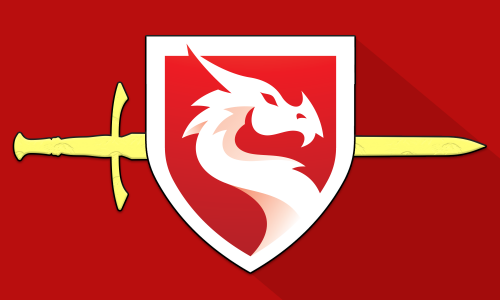






 The Beige Protection Bloc
The Beige Protection Bloc Gold Standard
Gold Standard  Goat
Goat 
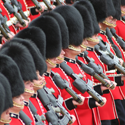 Soldiers:
Soldiers: Tanks:
Tanks: Aircraft:
Aircraft: Ships:
Ships: Spies:
Spies: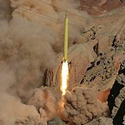 Missiles:
Missiles: Nuclear
Weapons:
Nuclear
Weapons: